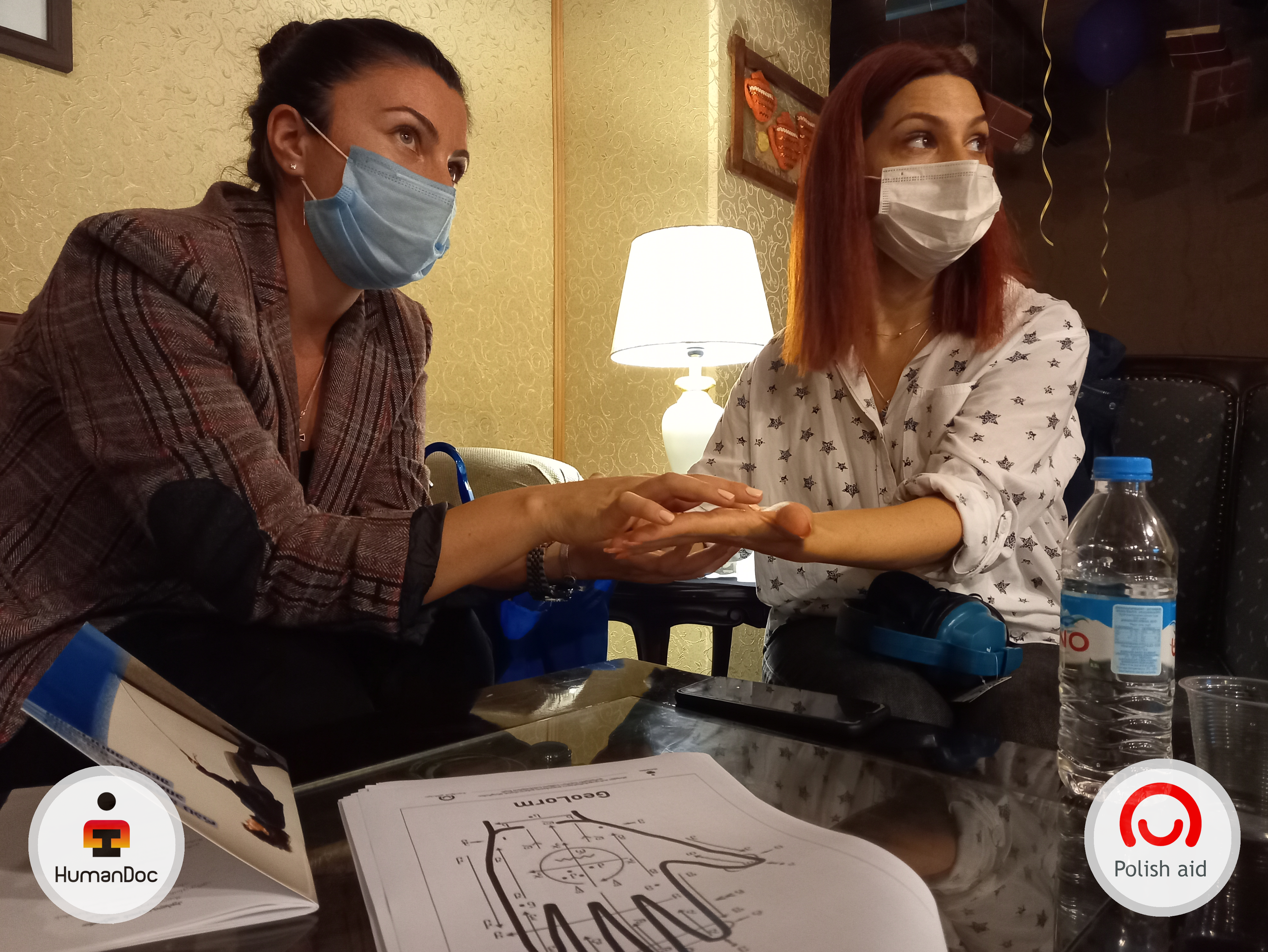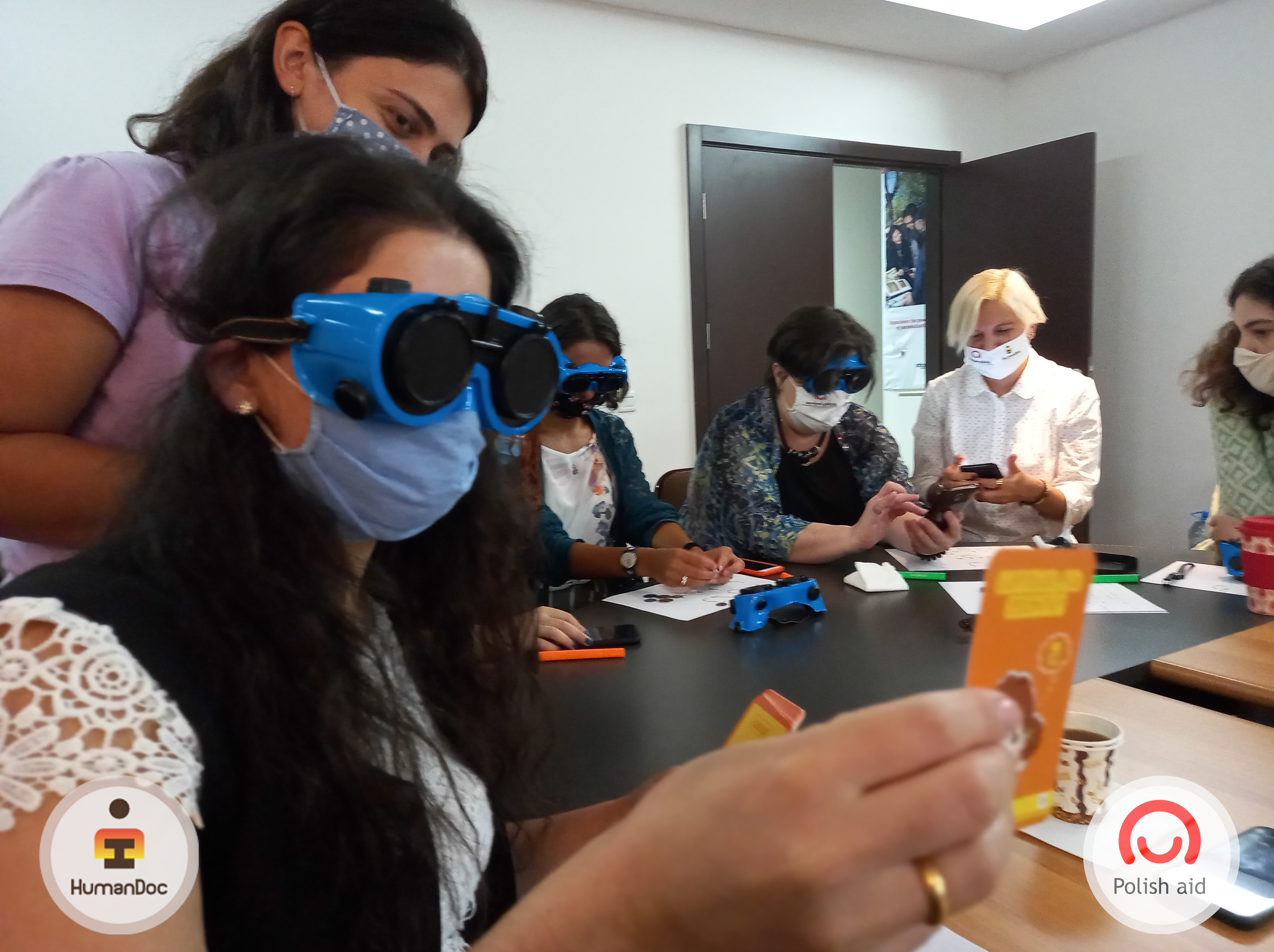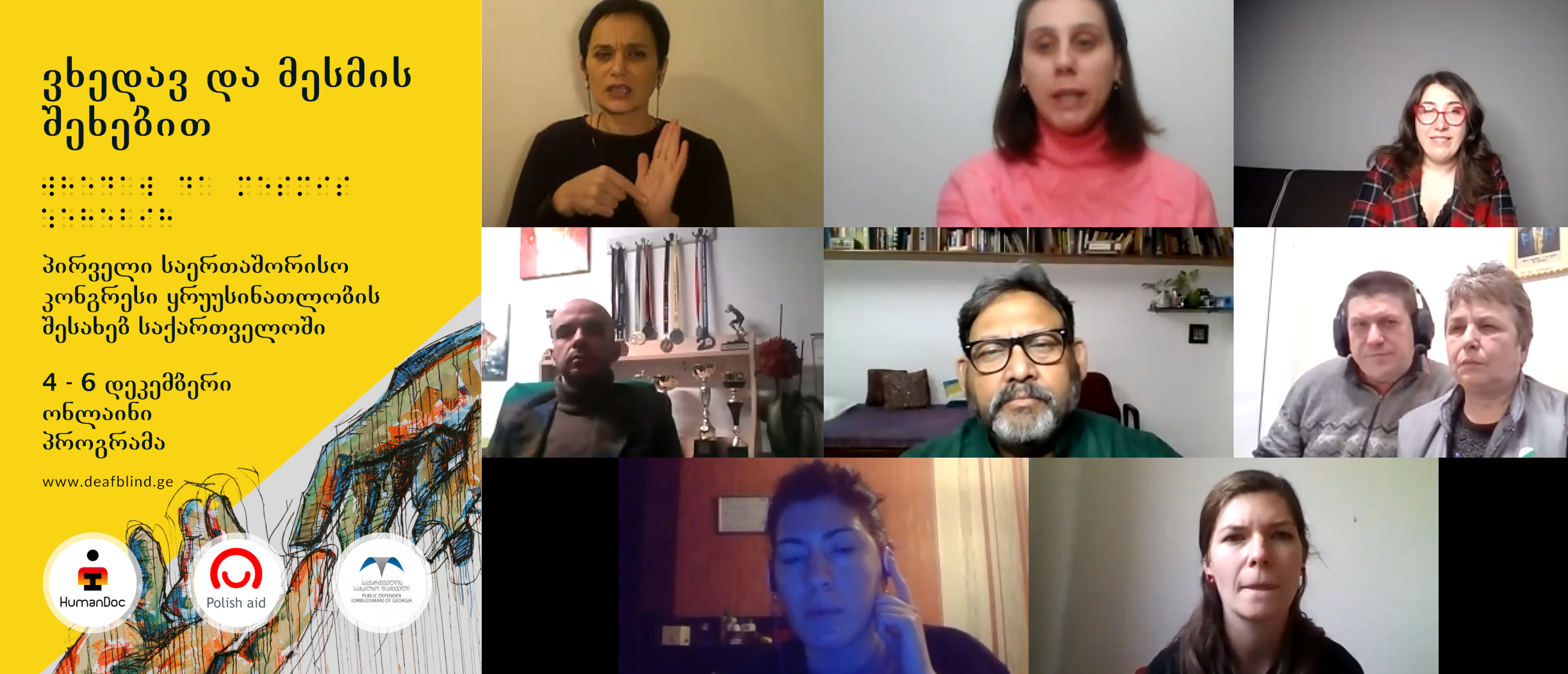Seeing and hearing by touch – support for people with coexisting visual and audial impairment in Georgia
02.03.2021
In 2020, a three-year project to support deaf-blind people in Georgia was completed. The three years of operating the project resulted in more intense activities of four clubs located in Tbilisi, Batumi, Telavi and Zugdidi that reunite more than 150 deaf-blind people.

The project helped train a staff of instructors to provide training to interpreter-guides for the deaf-blind; in 2020, the staff continued the training on their own. More than 90 new interpreter-guides were trained in six Georgian cities (Tbilisi, Batumi, Telavi, Zugdidi, Kutaisi and Gori), making the services of interpreters and guides more accessible to people with co-existing visual and audial impairments.
During training, the participants wore sound-cancelling headsets and goggles shutting off or blurring their vision, while the instructors set them tasks such as “go down the stairs” or “walk from point A to B.” Activities usually taken for granted suddenly became enormous challenges.
“For a few days, I faced the everyday experiences of blind, visually impaired, and deaf-blind people. And I can say that, despite my long-time experience, this was quite a challenge,” says Mariam Mghvdelidze who has been working as a special education teacher in Kutaisi for seven years. She is experienced in working with pupils with various impairments, but has not yet worked with visually and audially impaired people. She knows, however, that sooner or later she will have to help blind-deaf pupils too. This is why she attended the training sessions, becoming one of the 90 new interpreter-guides who provide real help to deaf-blind people in Georgia.
Another challenge faced by this group of people with disability was the pandemic and the resulting restrictions. Moving on their own, communicating with the surroundings or obtaining information, already a difficult task, became even harder. However, thanks to equipment supplied to the clubs their meetings could be (and still are) continued remotely, which helps to, among others, spread information on the new measures introduced in the country.
Up to now, deaf-blind people in Georgia were practically excluded from healthcare because communicating with them required the presence of an interpreter-guide. As part of the project, the clubs received suitable equipment (for example laptops with webcams), improving the efficient contact between deaf-blind people and physicians with the help of interpreter-guides.
The project also resulted in two practical publications. The first refers to creating spaces friendly for deaf-blind people while the other is a set of recommendations on forms of assistance provided to them. Both publications were translated into Georgian.
The project's efforts were crowned by holding the first International Deaf-Blind People Congress whose motto was “Seeing and hearing by touch”. Experts and deaf-blind people themselves from Georgia, India, Hungary, Czech Republic, Bulgaria, Spain, Canada, and Poland exchanged their experiences and knowledge and inspired each other to undertake further activities. Participation in the discussion panels or workshops was open to everyone, the meetings were conducted in Georgian and English, and the entire congress was interpreted into Georgian sign language. For the first time in Georgia, live close captioning was used during lectures, panels, and discussions. Video recordings from the congress in the original languages are available at www.facebook.com/geolorm.
It is worth noting that the project resulted in the foundation of the Georgian Association of Deaf-Blind people, which brought the three years of Polish efforts in building a system supporting deaf-blind people in Georgia to completion and offered hope that the already achieved results would be sustained and the efforts on behalf of this group of people with disability continued, also using funds provided by foreign donors.
The project was carried out by the HumanDoc Foundation as part of a development cooperation programme financed from the Ministry of Foreign Affairs funds.


